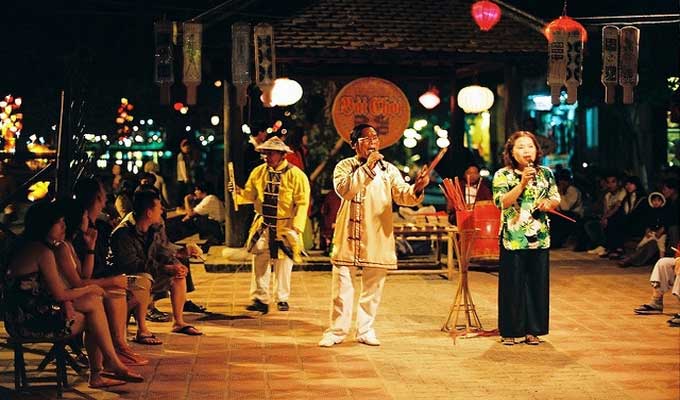Viet Nam has a treasure trove of tangibles and intangibles that can be exploited to develop sustainable tourism. The question is how to effectively exploit it.

Among tens and thousands of historical, cultural relics and tourist attractions, Viet Nam has 85 special national monuments, 3,329 national relics and 9,857 provincial relics. To date, eight places have been recognized as world heritage sites, including the complex of Hue monuments, Ha Long Bay, My Son Sanctuary, Hoi An Ancient Town, Phong Nha - Ke Bang National Park, Thang Long Imperial Citadel, the Ho Dynasty Citadel and Trang An Landscape Complex.
Vietnamese cultural heritage also encompasses aspects that are intangible. They include traditions and customs, festivals, performing arts, traditional handicrafts, traditional medicine, culinary speciality and traditional costumes of Viet Nam’s ethnic groups. Viet Nam has 11 heritages, which were recognised as intangible cultural heritage of humanity and intangible cultural heritage in need of urgent protection, including Nha nhac (Hue royal court music), the Cultural Space of Central Highlands gongs, Bac Ninh Folk Songs, Ca Tru (traditional ceremonial singing), the Giong Temple Festival, Xoan singing, the Hung Kings worshipping ritual, Don ca tai tu (Southern folk music), the Nghe Tinh Vi-Giam folk singing, 'Keo Co' (Tug of War) folk game and the worship of Mother Goddesses.
Viet Nam’s tangible and intangible cultural heritages have become very expensive human resource for sustainable tourism development, especially when the Politburo has issued a resolution on developing tourism into a spearhead economic sector. Over the past years, the cultural heritage has always played a positive role in preserving cultural values and educating the nation's patriotic and national pride. Cultural heritage has a strong potential to promote and contribute to Viet Nam’s socio-economic development.
Increased tourism revenue from ticket sales at the World Cultural Heritage sites is a remarkable contributor to Viet Nam's economic growth, while it creates more job opportunities for local people. According to the Cultural Heritage Department under the Ministry of Culture, Sports and Tourism, at the Complex of Hue Monuments, revenue from ticket sales and services rose from VND 104.5 billion in 2012 to VND 207 billion in 2015. Similarly, Trang An Scenic Spot rose from VND 355 billion in 2012 to VND 410 billion 2015; Hoi An Ancient Town went up from VND 49 billion in 2012 to VND 120 billion in 2015 (according to data of the Department of Cultural Heritage).
Most of the localities, regions, and areas have conducted research to identify typical cultural values, strength of the cultural heritage to develop specific tourism products, build specific brands and cultural images. The central region of Viet Nam, known as “Land of heritage”, with the development of the brand, “Heritage Route,” attracts a large number of domestic and international tourists.
In early 2016, three localities in the central region of Thua Thien-Hue, Da Nang and Quang Nam have made efforts to build the brand “The Essence of Viet Nam” with support from the project “Responsible Tourism”, funded by the European Community. Quang Nam is typically a success story, promoting the image of “Quang Nam-Two World Heritage Destination.” Hoi An is trying to build a brand associated with traditional occupations, especially “Lantern Festival,” Thua Thien-Hue with “Hue Festival”, Quang Ninh with “Carnaval Ha Long”, Hai Phong with “Flamboyant flower festival.” The identification and branding based on differences in cultural heritage is a fundamental step to create a foundation for the promotion and development of tourism.
In 2016, Viet Nam welcomed 10 million international visitors and millions of domestic tourists. Among them, the number of visitors visiting the relics and festival of heritage were remarkably high.
However, discovering cultural heritage value in sustainable tourism development is still limited. Besides constraints in tourism infrastructure, tourism business environment, natural environment, food safety, quality of tourism, and human resources, potential and strengths of cultural heritage have not been brought into play for tourism development. Many heritage tourism products have not met requirements in terms of tourism experience, uniqueness, variety, thus failing quickly.
To effectively link conservation and heritage values to sustainable tourism development, there is a need for a combination of strong and comprehensive immediate and long-term solutions. It is necessary to raise awareness on how cultural heritage can be the way forward to developing sustainable tourism.